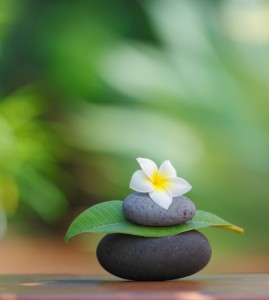Shiatsu in Japanese literally means “finger pressure”, yet this Japanese ancestral form of bodywork goes beyond simple massage technique. Jushas (Japanese word for the Shiatsu recipient) often report that they feel “nurtured, nourished, complete”, that they “received exactly what they needed”.

How does Shiatsu work?
Shiatsu promotes the healthy functioning of the organs. Shiatsu promotes a deep state of relaxation, favorable to internal shifts and stress  elimination. The origins of the therapy are found in Traditional Chinese Medicine and treat the mind and body as a whole, understanding how one affects the other.
elimination. The origins of the therapy are found in Traditional Chinese Medicine and treat the mind and body as a whole, understanding how one affects the other.
During the session, pressure is administered by using palms, thumbs, fingers, elbows, or knees and feet, to respond to the precise needs of the recipient and body parts at the time given.
Shiatsu’s power and depth of pressure does not imply the use of muscular strength, but rather a “leaning on” from the practitioner’s body weight. As a result, the “tsubos” (energy points, such as the ones manipulated in Acupuncture) open up, there is a release of tensions and there is an improvement of the recipient’s physiological and emotional condition. It also allows the harmonious Ki ( Qi, or energy) flow to be restored.
This art lies in mastering the Hara:
The Hara (the lower Dan Tian in Chinese) in TCM, symbolizes the body’s center of gravity and the source of its vital energy. It is traditionally located deep in the belly, bellow the navel. This primordial energetic center has also been described as “ the root of the tree of life”, where all the body’s circulation begins. The Hara, or lower Dan Tian, is considered to be the foundation of rooted standing, breathing, and body awareness, in Qi Gong and many forms martial arts. It corresponds to the yoga concept of the Swadhisthana chakra. In yoga philosophy, it is thought to be the seat of Prana that radiates outwards to the entire body.
The Zen Shiatsu practitioner focuses on and breathes with his Hara, as in Zen Meditation, during the session in order to develop a peaceful and mindful awareness. This has proven to be conducive to a “good Shiatsu”, meaning the bodies of the recipient and giver, lean on each other, communicate and are both actively engaged in the session.
“I can feel that it helps my body parts breathe” describes Fanny K, a Shiatsu recipient from Hong Kong.
Shiatsu techniques encompass precise criteria to be able to attain such results and touch the body and the mind:
- Stability
- Perpendicularity
- Continuity
- Mindfulness
These principles embrace and awaken the natural physiological body response to Gravity ( its connection to Earth). As a result the body recognizes itself as a whole rather than separate units and its natural intelligence toward balance is encouraged.
If, like me you do not believe in the famous “no pain no gain”, then you may want to give Shiatsu a try.

Here is what an adept says:
“Putting my Shiatsu experience into words is not an easy task…because I felt the benefits of Shiatsu on many different levels and also because they occur still long after the session.
‘Before receiving regular Shiatsu sessions, I was more stressed and did not know how to put together all the tools that I had developed through my Yoga studies and practice in order to channel my stress. Now, I can reflexively use them when I am facing a challenging situation.
‘During a Shiatsu session, I am feeling very relaxed, since I learnt to let go. What I experience is a subtle alchemy between the precision of your practice and your human qualities ( as a compassionate, altruistic person, your understanding of emotional and physical difficulties) helped me to relax with trust.
‘During a particularly challenging time of my life, receiving regular sessions truly helped me to hold on, week by week. It also helped me to change my relationship to my body, and to fully become aware of it…I am able now to be present with every part of my body during the sessions, and my other practices, without letting my mind wander around or the worries gain the upper hand. I would say that Shiatsu improves concentration and promotes a meditative state during the practice of Yoga asanas.
‘Each time I receive a Shiatsu, I experience a sensation of lightness in my body and in my mind, along with feeling grounded and in the present moment. This is my experience of Zen Shiatsu, I am hoping that I was able to convey it as it implies many subtle layers that are difficult to express with words, especially on the energetic level”.
C.K: Yoga teacher and fervent practitioner, also a dedicated mother, residing in Hong Kong.
More reading about Zen Shiatsu:
Zen Shiatsu, How to harmonize yin and yang for better health , by Shizuto Masunaga.
How to strengthen you own Hara? A simple short practice for daily life:
Sitting comfortably (even in the bus!), kneeling, or in a lotus position.
• Place a hand bellow your navel, palm on your belly
• Place your other hand, on the opposite side, palm on your lower back
• Relax your body and breathe effortlessly. Encourage a slightly longer exhale
• Bring your attention to the sensations of your belly expanding and condensing with each breath. Notice the warmth and space between your hands. Enjoy this awareness for as long as you want
• When these sensations are clear, and you can sense the expansion of your Hara, like a balloon becoming denser and more flexible, you may want to bring both your hands to the front. You can also experience this exercise standing in a stable, yet relaxed position
Benefits:
• Balanced energy level
• Grounding
• Calms and clears the mind